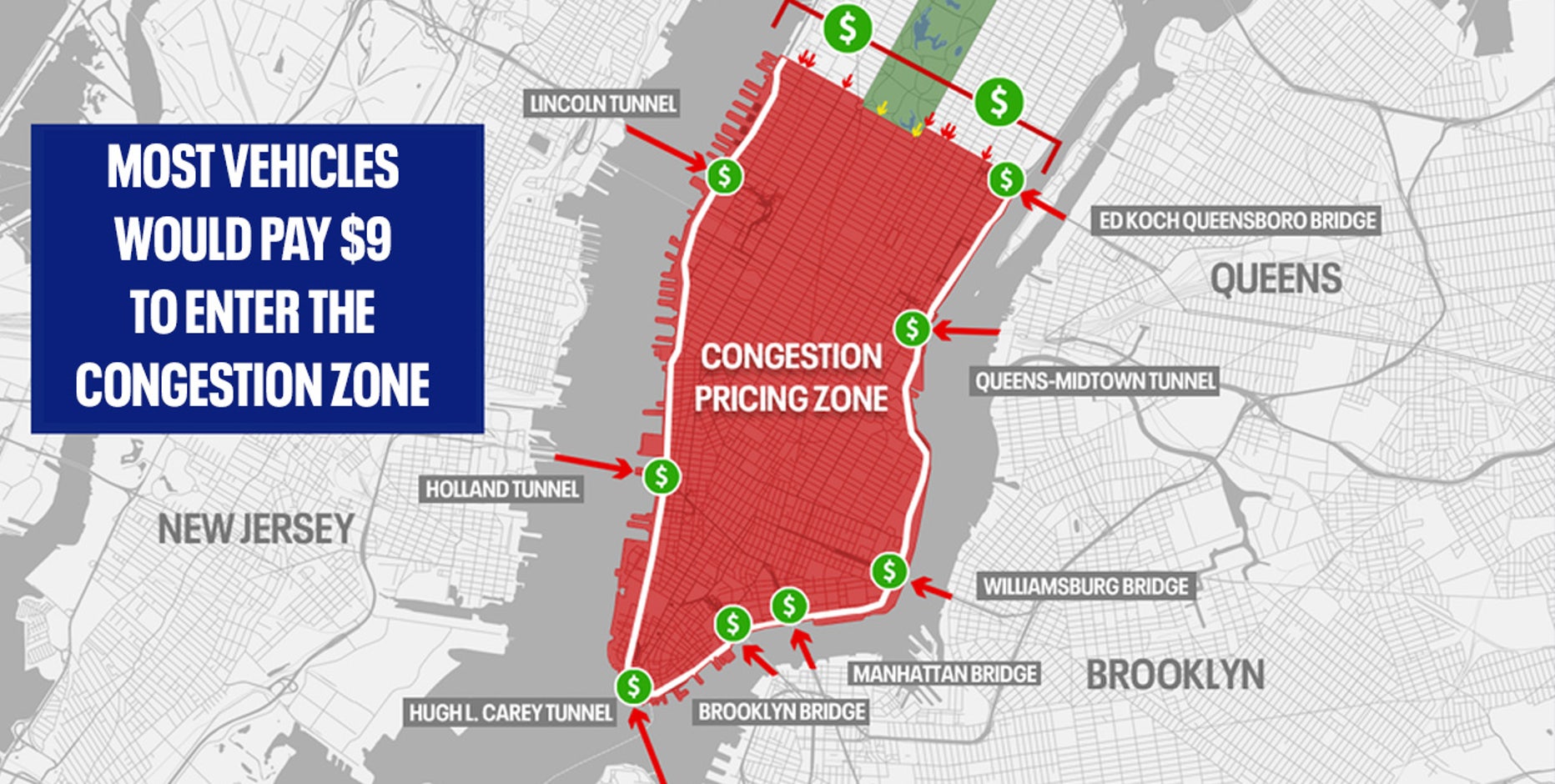Trump in talks with Hochul over congestion pricing, source says

Is NYC congestion pricing working? What data shows
NYC congestion pricing has brought modest traffic reductions in its first week, according to preliminary data released by the MTA. FOX 5 NY's Briella Tomassetti has the details.
NEW YORK - President Donald Trump may be watching Governor Kathy Hochul’s congestion pricing plan more closely than expected.
According to a source familiar with the matter, Trump and Hochul spoke twice this week, discussing a range of issues, including New York City's congestion pricing.
The New York Times reports that the Department of Transportation is discussing whether to withdraw a key federal authorization that the tolling plan received from the Biden administration last year.
No final decision has been made, but President Trump has remained adamant about halting congestion pricing.
Trump on congestion pricing
The backstory:
Following the 2024 election, Hochul seemingly rushed to restart the tolling plan before Trump took office, aiming to secure it before he could cancel it in his first week. But with ongoing talks between them, the future of congestion pricing remains uncertain.
Featured
New NYC congestion pricing plan: Details for drivers
Like it or not, NYC congestion pricing is officially back from the dead. Here's what you need to know about fees, hours and when the plan goes into effect.
New York Republicans have long believed President Donald Trump could kill Gov. Kathy Hochul's congestion pricing plan, and while no final decision has been made, Trump has promised to halt it upon taking office, citing its negative impact on the city’s economy.
What they're saying:
Earlier this month, Mike Lawler, Nick LaLota, Andrew Garbarino and Nicole Malliotakis, said the President promised to kill the plan, something he was quite open against even before it went into effect.
While the congestion zone itself appears to have lighter traffic, some commuters are questioning whether the traffic has simply shifted to surrounding areas.
Lawler said lawmakers are so determined to kill the tolling program because of the cost on New Yorkers.
"The MTA has more debt than 80% of the states," Lawler said. "The fact is this or entity, this authority, needs a complete overhaul. Congestion pricing needs to be stopped. Kathy Hochul is charging New York residents $2,500 just for the privilege to commute to work."
Is congestion pricing working?
By the numbers:
Congestion pricing began on Sunday, January 5, charging $9 for most passenger cars entering Manhattan below Central Park during peak hours. Early data from the MTA showed a 7.5% decrease in daily traffic, or roughly 43,000 fewer cars compared to the same period last year.
The MTA reported that since the congestion pricing plan was launched on Jan. 5, more than 1 million fewer vehicles have entered the Congestion Relief Zone (CRZ) than they would have without the toll.
Since the launch of congestion pricing, the MTA has reported that an average of 490,000 vehicles enter the CRZ daily, while an additional 63,000 travel through the Central Business District (CBD) using toll-exempt roadways.
TRANSCOM provided data to the MTA saying how drivers have been experiencing much faster commutes.
Here's what they're saying:
- Inbound trip times on all Hudson and East River crossings are now 10% to 30% faster or more than they were in January 2024.
- Drivers crossing via the Holland Tunnel are experiencing the most improved daily time crossings, with a 48% reduction on average during peak morning hours.
- The Williamsburg and Queensboro Bridges are both experiencing an average of 30% faster trip times.
- Drivers on the Long Island Expressway, Flatbush Avenue, NJ 495 and other roads leading up to crossings have been seeing improved speeds.
Data from TRANSCOM also showed that drivers in the CRZ are experiencing travel time improvements especially during afternoon peak hours with reductions as high as 59%.
How does congestion pricing work?
What we know:

Is congestion pricing actually reducing traffic?
After years of planning, controversy and numerous legal challenges, congestion pricing is here. More than 1,400 cameras are in place at 110 detection points. Director of the NYU Rudin Center for Transportation Sarah Kaufman joins us to share the latest on congestion pricing.
Congestion pricing aims to reduce traffic by imposing tolls on vehicles entering Manhattan’s business district. So far, early observations indicate some success in decreasing congestion. Pedestrians say they have noted lighter traffic, particularly on streets like 2nd Avenue and East 60th Street, near the congestion zone boundary.
The congestion pricing initiative is still in its early stages, and more data will be needed to evaluate its long-term impact. While the toll has repelled some drivers, questions remain about whether the changes are sustainable or if additional measures will be required.


